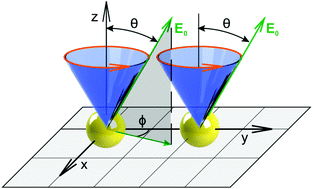Tunable interactions between particles in conically rotating electric fields
Abstract
Tunable interactions between colloidal particles in external conically rotating electric fields are calculated, while the (vertical) axis of the field rotation is normal to the (horizontal) particle motion plane. The comparison of different approaches, including the methods of noninteracting, self-consistent dipoles, and the boundary element method, indicates that the last method is the most suitable for tunable interaction analysis. Thorough analysis, performed for interactions in pairs and clusters of colloidal particles, indicate that two- and three-body interactions make the main contributions in the interaction energy, while the effect of high-order terms is negligible. The tunable interactions are determined by the dielectric properties of the particles and solvent and can be changed in a wide range, providing a rich variety for the experimental “design” of different interactions, including repulsion, attraction, combination of short-range repulsion with long-range attraction, barrier-type interactions with short-range attraction and long-range repulsion, and double-scale repulsive (core–shoulder) interactions. These conclusions can be generalized for magnetically induced tunable interactions. The results indicate that tunable interactions can be widely applied in self-assembly and particle-resolved studies of generic phenomena in fluids and crystals, and, therefore, are of broad interest in the fields of chemical physics, physical chemistry, materials science, and soft matter.



 Please wait while we load your content...
Please wait while we load your content...